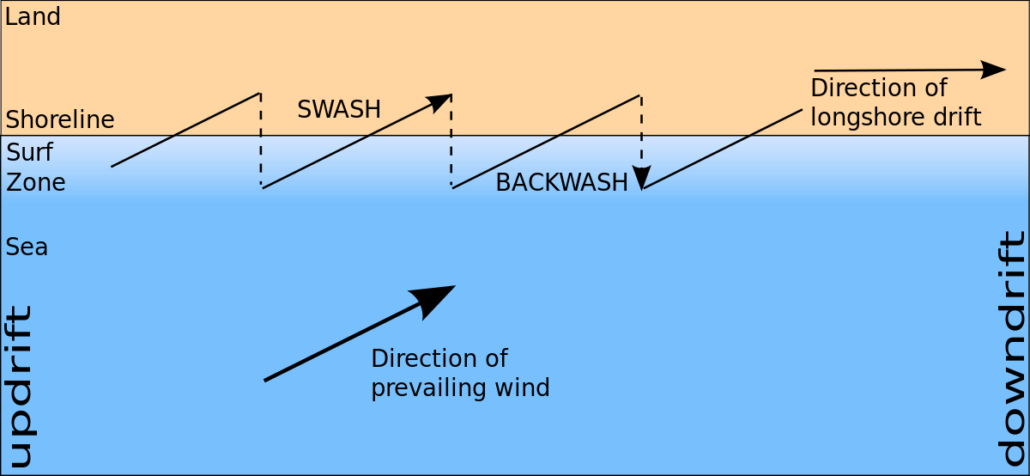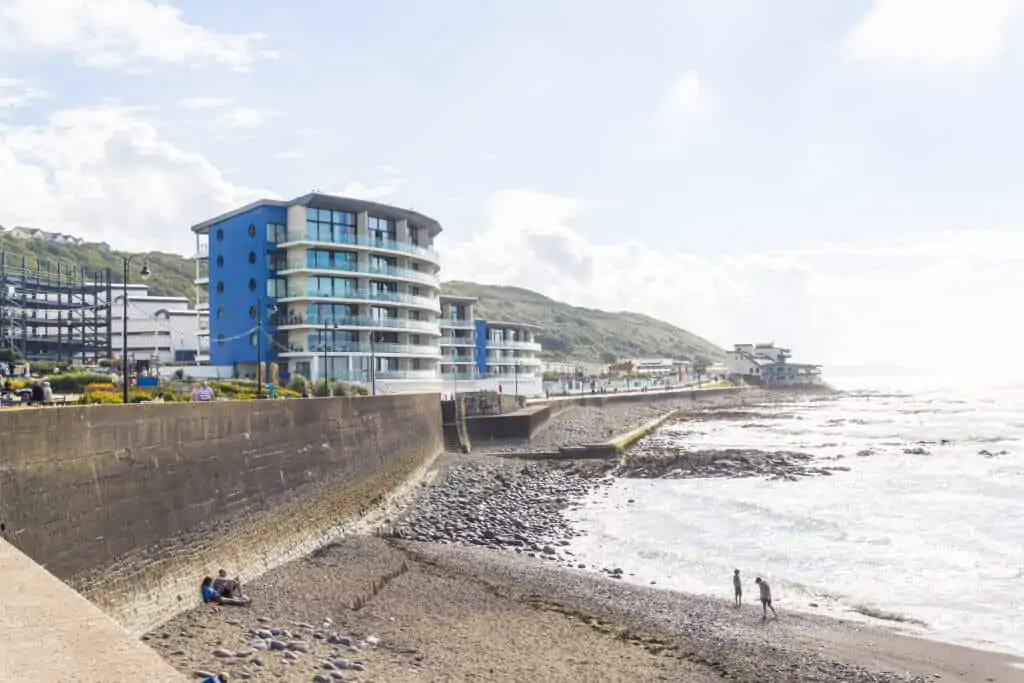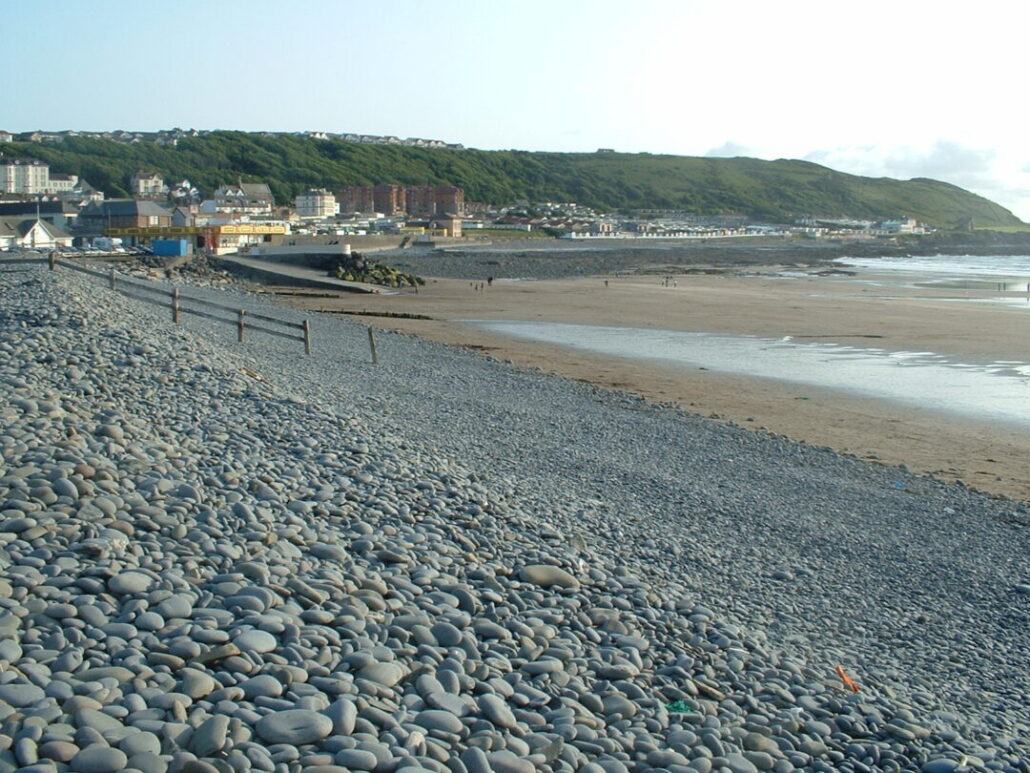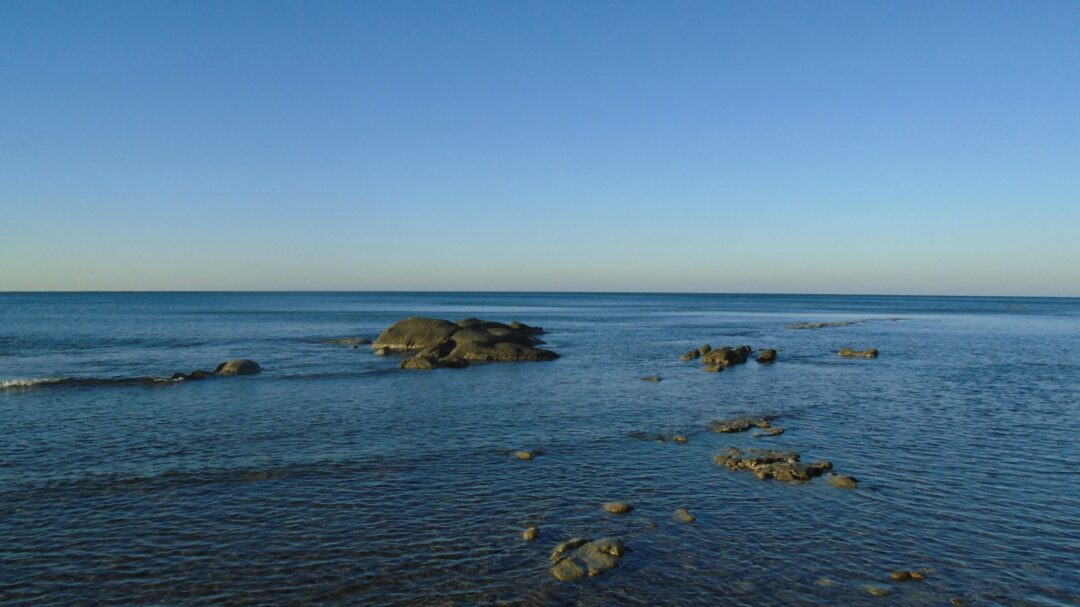If you’ve ever visited Westward Ho Beach in North Devon, you may have noticed a fascinating feature, a long pile of pebbles known as the pebble ridge.
In this article, we’ll explore the origins of this unique landform and why it’s so important to the local community.
Two Miles Long, But New?
The pebble ridge stretches for two miles, extending from the southern end of Westward Ho Beach to the Taw-Torridge estuary (Grey sands beach).
Despite its long existence, geologically speaking, it is relatively young. Scientists believe that it was formed as a result of a tsunami in 1607.
The pebbles found in the ridge actually come from further along the coast to the west and have been gradually transported by the waves over time.
This process, known as ‘long shore drift,’ has led to the accumulation of pebbles, forming a two-mile-long embankment or spit.

The pebble ridge is a dynamic landform, meaning that it is constantly changing shape as new material is carried along the coastline by the waves.
This transformation can be quite rapid during high tides and winter storms. On average, the ridge moves about one meter inland every year.
While the movement of pebbles along the spit is a natural process, human interference has also played a role. Since the 1800s, there has been a traditional practice known as ‘potwalloping.’
During the winter months, local people would venture to the beach and throw pebbles back onto the ridge that had fallen off during storms.

However, the development of Westward Ho! and the construction of seawalls and buildings along the cliff edge have disrupted the natural supply of pebbles moving westward along the bay.
This interruption is a cause for concern because, without a continuous supply of new pebbles, the ridge could potentially breach at its southern end, resulting in flooding and damage to nearby properties.
In the past, heavy machinery was used to manually move pebbles back onto the ridge, artificially replenishing the supply.
However, the approach to managing the ridge has changed in recent years.
Nowadays, pebbles are only repaired and restored to the ridge when there is an actual breach or a threat of a breach.
Westward Ho! is a popular family holiday destination, the same as Bideford. However the Surfing at westward Ho is legendary, it should be noted that the tide comes up and onto the pebble ridge, so surfing at high tide is not recommended.
A Local Feature

The pebble ridge of Westward Ho Beach is a captivating natural feature shaped by the forces of nature. Its origins can be traced back to a historic tsunami and the relentless movement of pebbles along the coastline.
While human activity has altered the natural balance, the community now recognizes the importance of allowing the ridge to evolve naturally, intervening only when necessary to protect the land and properties behind it.
Next time you visit Westward Ho Beach, take a moment to appreciate the pebble ridge beneath your feet and the fascinating story it tells about the ever-changing coastal landscape.

Our newsletter is packed with helpful tips and resources to help you mazimise your time in & around Bideford. Sign up now and join our community of savvy Bideford’ers.
About the Author
Welcome to Bideford.com! I’m Jason Jr, a seasoned explorer and avid fan of Bideford and the broader North Devon area. With over a decade of consistent family visits, virtually every weekend, I’ve immersed myself in the rich history and vibrant culture Bideford & North Devon.
On this site, you’ll find a wealth of knowledge amassed from my adventures here. From in-depth local guides to engaging blog posts about Bideford. Whether you’re looking for recommendations on things to do or guidance on where to stay we have you covered. Join me as we delve into the heart of Bideford, North Devon – a town that’s more than just a destination, but an experience waiting to be discovered.
Do you want to see your favourite Bideford attraction, place to stay, event or activity listed here? Contact Us!







